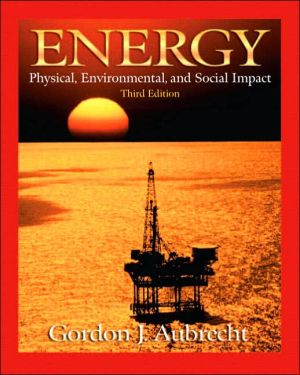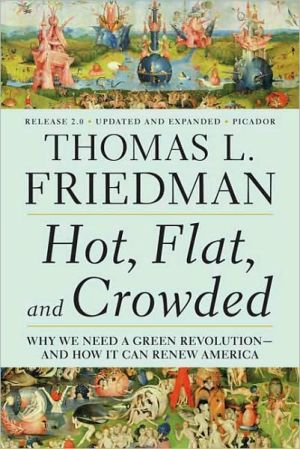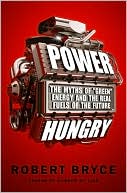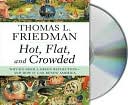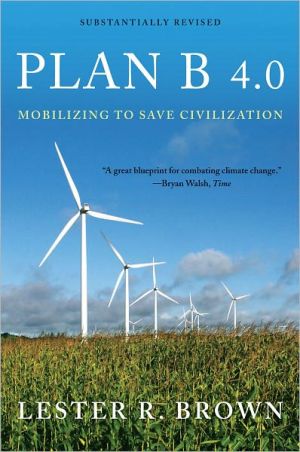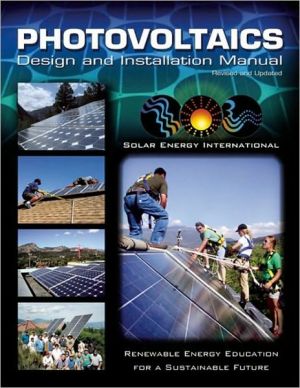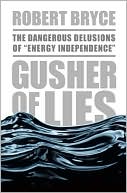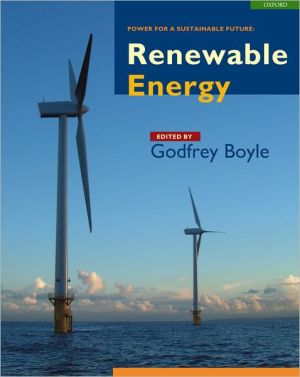Energy: Physical, Environmental and Social Impact
Energy, Third Edition, focuses on energy needs, trends, long-term prospects, and resource supplies, addressing all the various issues involved with energy—from population, to production, to distribution, to the consequences of the choices made in supplying the energy.\ Companion Website (CW) http://physics.prenhall.com/aubrecht New to the Third Edition, the CW provides chapter overviews, on-line web destinations, student self-check questions, full chapter references, conversion...
Search in google:
This book focuses on energy needs, trends, and long-term prospects and resource supplies.It discusses the physics of energy, atoms, nuclei, thermal energy, solar energy, alternative energy, and the consequences of energy production.For physicists, geologists, and geographers, or anyone who wants a better understanding of the production, consumption, and conservation of energy.
This book originally grew out of a course I taught at the University 1974 and 1975, just after the first of the "energy crises" wakened interest in the topic. The course was one quarter long and was one of a series of "minicourses" instituted in the physics department because of student desire for relevance.\ Preparation for the course was difficult because of the wildly diverse group of students who enrolled. I decided at the outset that I would not be apologetic about introducing the physics needed for the ensuing discussions. The ability to sift through data, winnow the salient features, and act upon that basis was something I tried to emphasize throughout the course. A few of the problems were discussed in some detail in response to specific student interest; for example, the material on insulation and lighting was originally incorporated because of interest expressed by a group of architecture students taking the course.\ At the Ohio State University, I was involved in another physics course, Physics 100.02, which was generated in the early 1970s in response to the same pressures that led to Physics 114 at the University of Oregon. This course got me more involved in the experimental and phenomenological details of matters pertaining to energy. Many of these insights were incorporated in subsequent drafts of the book.\ These courses focused in part on the moral dilemmas facing our technological society in its quest for some control of its own destiny. The lack of sensitivity to moral issues is embarrassingly present all around us. When moral issues are embedded in technological and economic decisions, even people of obvious good will are inclined to leave things to the "experts." These experts may encourage others in this; only they know the full facts of the matter, they say. The issues are too complex to allow free and open discussion, they say. We know best, they say. It is undeniable that experts do know a great deal about "current" technology. The problem is that many of these experts tend automatically to favor the status quo, and may foreclose options just because "it isn't done that way." Involved and informed outsiders can force people to reexamine their preconceptions. People are so much creatures of habit that this process can be extremely uncomfortable.\ Responsible societal decisions cannot be made without broad involvement. If people remain willfully ignorant, politicians may decide these things, and politicians are as woefully uninformed as the rest of the citizenry. Knowledgeable citizens must be able to make their knowledge relevant and lead politicians to adopt responsible answers. This has happened in our past. The Clean Air and Clean Water acts of the 1970s came in response to concerned citizen involvement.\ It is simply not true that laymen cannot grasp the issues or the technology involved in matters of social interest. In this book I attempt to inform people in a fashion that will allow them to use their good sense when they approach such questions as the application of technology to agriculture. We must have citizens who are not willing to "leave things to the experts."\ If our children were cold, we would wish to keep them warm. If we ever thought about it, we would wish the same for our grandchildren and great grandchildren. The responsibility for their well-being and for the equitable distribution of resources between present and future—for example, for their access to the dowry of the last several hundred million years of stored solar energy (coal and oil underground)—rests clearly with all of us at the present time.\ The purpose of this book is to give the reader some understanding of the important decisions which must be made soon; of the tradeoffs between risks and benefits as well as we are able to define them; of the consequent social and political choices; of the role the reader, as an informed citizen, is able to play. Choices will have to be made. There are no free lunches.\ I have attempted to indicate in the text where my own value judgments have intruded. I have attempted to tell the story in a balanced way, and to present a lot of data in graphs and tables. I hope there is enough information given to allow the reader to decide which issues are important for the future. Hard decisions are looming and they will be made either in full knowledge of the issues involved or by default. My prayer is that we take the former course.\ For the teacher: These issues must involve your value system; they cannot be addressed in a moral vacuum. Level with your students. Let them know where you stand.\ For the student: Question, question, question! Question my values as presented here, your teacher's as given in class, and most of all, your own.\ REFERENCES\ Why the explicit references? The reader cannot fail to notice the explicit references to the popular and scientific literature in the book. There are about 5300 separate references in the book. I have included all these references for important reasons. First, they serve to indicate that there has been a discussion on the topic in the scientific community that bears on its credibility. Second, they provide resources for the interested teacher and student; they are a springboard to further knowledge. Third, they provide a teacher the opportunity to ask the students to research a particular topic with the knowledge that the student has good resources to turn to. In recent years, my students have turned to the internet to "research" their term papers, yet much "information" on the internet is incorrect. The cited references send them into the internet armed with some specific comparisons, and ensure their further work is based on knowledge of what the scientific community has done so far.\ There are a very few references to pre-1960s literature to provide the reader access to the history of development of a few important ideas. I think it amazing how prescient these scientists were so many years ago. While most of the literature on energy is recent, there are really important ideas that have changed the worldview of physicists, and the general public, that benefits from the technology developed as a result of that advance.\ The popular literature references are important because most public libraries (and all university libraries) have archived microfilm versions of the large-city newspapers, especially the New York Times, the Washington Post, the Chicago Tribune, and the Los Angeles Times, all national in scope. They also cover politics, which is inextricably mixed with questions of energy policy. Some students cannot read Scientific American or actual scientific journals with great comprehension because of lack of practice. Even if no journals are available to the reader, these library popular literature resources should be available locally.\ The scientific literature is cited because of the tendency of many people to speak in generalities and misrepresent their knowledge of a particular subject. Contained within the vast scientific literature of energy is information that can lead the informed citizen to ask pointed questions. Having a broad base of knowledge support available is also a way to prevent oneself from becoming trapped into a mistaken point of view, and I have tried to provide the relevant documents so the reader will be able to draw on this support.\ WHAT'S NEW IN THIS EDITION? Currency\ The current edition is as up-to-date as I can make it. In most cases, I chose to use year 2000 dollars as the monetary standard. I have studied the trends carefully and the political and social aspects of energy are also as current as I can make them. I have highlighted a few important aspects of the chapter topics with boxes that expand on them with the themes A Closer Look, Applications, Case Study, Doing Your Part, and History of Energy. The end-of-chapter exercises are virtually all new for this edition. We have made sure that there are some problems that can stretch a student at any level.\ Reorganization\ This third edition benefits from the input of colleagues and reviewers, who urged me to make a few organizational changes. In the previous edition, I faced the problem that many topics that needed to be mentioned could only be mentioned in one or two paragraphs. This often interfered with the flow of the story of the chapter and seldom was able to do justice to the subject. In this edition, I have been able to tighten the organization of the printed chapters by referring interested readers to Extensions (see below) that are able to treat the topics with the attention they deserve without interfering with the chapter's story. In the second edition, the sections were organized according to the Energy Supplies and the Consequences of Use. In this edition, I have grouped the chapters based on the physics involved. Thus, all the nuclear chapters are together, all the fossil-fuel energy chapters are together, all the solar energy chapters are together, etc.\ Extensions\ The Extensions are extra topics available for download in PDF format from this book's Companion Web Site (CW). The Extensions are referred to in short summaries, with the name of the Extension indicating the subject. These Extensions cover major topics that are either too technical to be in the printed text, or are not as important to the central story, and also allow more extensive discussion of important topics that had to be left out of previous editions or that were mentioned only in passing. Some Extension topics include: the costs and effects of the 1990 Clean Air Act Amendments; the deregulation fiasco in California (but the success in Pennsylvania); the risks and possible benefits of oil development on the Arctic National Wildlife Refuge; the polluting effects of cars; the disposal of nuclear wastes; the linear no-threshold dose model; the near-accident at the Davis-Besse nuclear facility in 2002; the radioactivity we are exposed to from coal plants, and much, much more. These extra discussions add richness and vital information, but are not placed in the print text, where the detail would overwhelm the points being made.\ Companion Web Site (http://physics.prenhall.com/aubrecht)\ In addition to the Extension readings, the CW also contains Chapter-by-Chapter Learning Objectives, Online Web Destinations, Self-Check quizzes, Complete Chapter References (including all author names and complete title of the work to make identification easier), and Unit Conversion Spreadsheets.\ Unit Conversion Spreadsheets\ In most cases, no one learns much from doing conversions, especially if they are tedious. The Web Site has unit conversion spreadsheets I wrote that can convert virtually any unit of interest (energy-related or not) to any other-so if you want to know the energy in 12 tonnes of coal, equivalent, you can find out; if you want to know how many barrels of oil that represents, you can find that, too. Did you ever wonder what an acre-foot is? Most ordinary scientists and people do not use these units, and they are converted to International System units for ease in making comparisons to known units (I have tried to indicate conversions as appropriate in the text). A very compressed version of the spreadsheets is printed inside the book's covers.\ Cross-Chapter Correlation\ In this edition, I've tried to tie the similar topics more tightly together, emphasizing, for example how the relationship\ dose = (factor) x (exposure)\ is common for all sorts of cases-nuclear radiation, air pollution, etc., by writing the equations in parallel form in the appropriate chapters. The factor has different names depending on the pollutant, but the relationship is the same.
SECTION 1: INTRODUCTION TO ENERGY. 1. General Considerations. 2. A Digression on the Necessity of a Finite World Population. 3. Work, Energy, and Power.SECTION 2: ELECTRICITY GENERATION AND TRANSMISSION. 4. Electricity. 5. Consumption of Electrical Energy: Projections and Exponential Growth.SECTION 3: THERMAL ASPECTS OF ENERGY GENERATION. 6. Atoms and Chemical Energy. 7. The Efficiency of Energy Generation and Thermodynamics. 8. Production and Distribution of Electricity. 9. Conservation: An Important Energy Source.SECTION 4: MATERIAL RESOURCES AND CONSEQUENCES.10. Mineral Resources.11. Recycling and Reuse.SECTION 5: FOSSIL FUEL RESOURCES AND CONSEQUENCES.12. Fossil Fuel Resources.13. Environmental Effects of Utility Generating Facilities.14. Pollution from Fossil Fuels.15. Moving Down the Road.16. Weather and Climate.17. Climate Change and Human Activity.SECTION 6: NUCLEAR ENERGY RESOURCES AND CONSEQUENCES.18. Nuclear Energy.19. Energy from Nuclear Reactors.20. Safety and Nuclear Energy.SECTION 7: SOLAR ENERGY.21. Solar Energy.22. Solar Energy and Water.23. Biomass Energy.24. The Energy Cost of Agriculture (A Case Study).SECTION 8: ENERGY ALTERNATIVES.25. Energy Storage and Energy Alternatives.26. Tocsin.Appendix 1: Scientific Notation.Appendix 2: Logarithms.Appendix 3: Understanding Tabular Data.Appendix 4: Vector Addition.Index.
